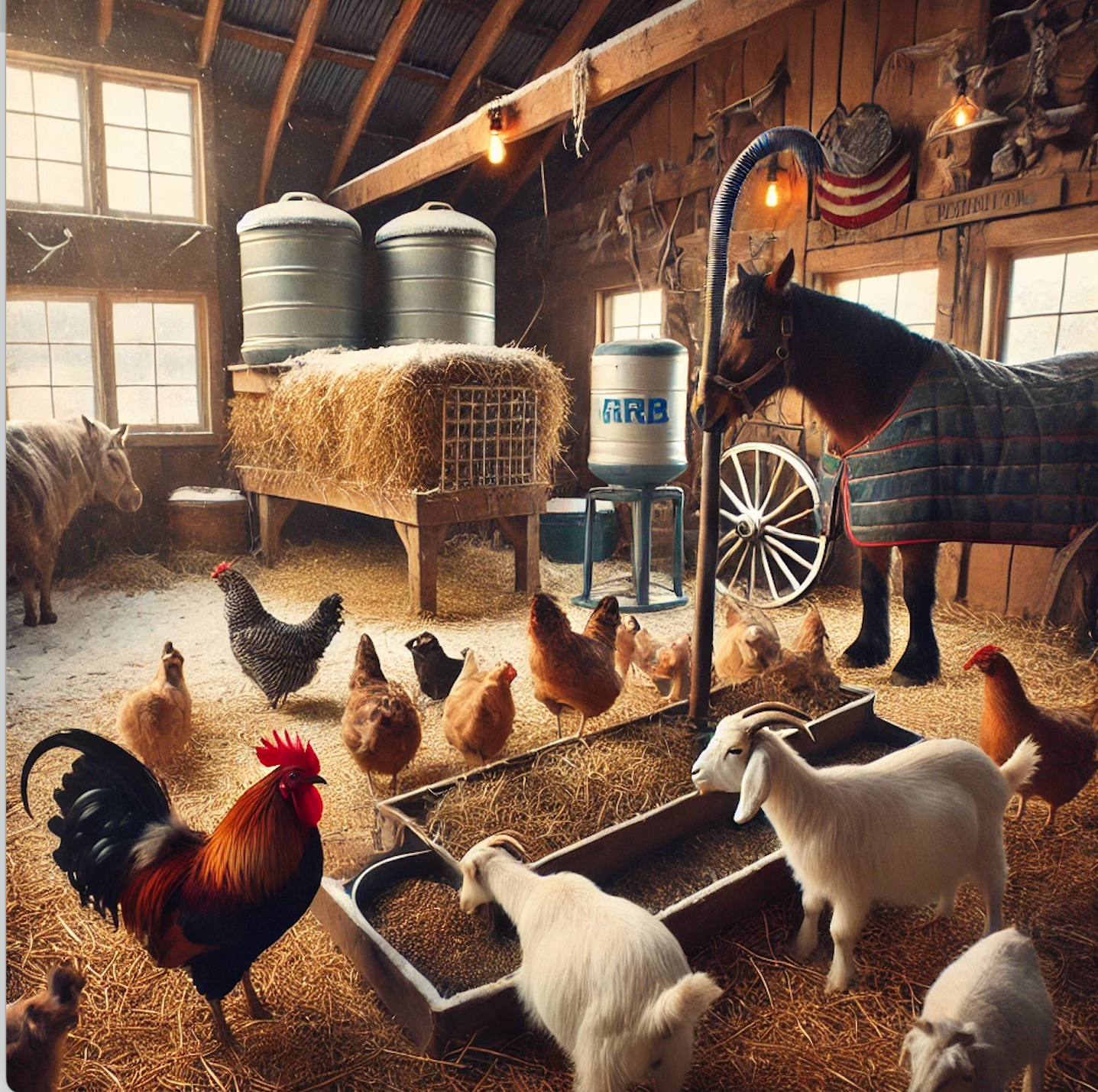

Keeping Them Healthy and Happy in the Cold

As winter sets in and the temperatures drop, our livestock face a whole new set of challenges. While animals are naturally resilient, a few adjustments to their diet can make a big difference in keeping them healthy, warm, and thriving through the cold months. On my homestead, winter is all about ensuring our animals get the nutrients and energy they need while also making sure their water stays unfrozen and accessible.
Here’s how I adjust the diets for my flock, herd, and other animals during the winter season.
1. Understanding Winter’s Impact on Livestock
When the weather gets colder, animals burn more calories to stay warm. This means they need not only more food but also higher-quality feed to meet their energy needs. Additionally, for animals like chickens and goats, egg production or milk yield can decrease if their nutritional needs aren’t fully met.
2. Adjusting the Feed
For Chickens
- High-Calorie Treats: I like to give my chickens cracked corn or scratch grains in the late afternoon. These high-energy foods help them stay warm overnight as they digest.
- Protein Boosts: Adding mealworms, black soldier fly larvae, or a bit of high-protein feed ensures they’re getting enough for egg production and feather health.
- Fresh Greens: Since free-ranging isn’t always possible in winter, I grow or supplement with sprouts, lettuce, or kale to give them some greens.
For Goats
- Extra Hay: Hay is a goat’s primary heat source during the winter. I make sure they always have plenty of high-quality hay available.
- Grain Supplements: For pregnant or lactating does, I provide a bit more grain to help with their increased energy needs.
- Minerals and Salt: Goats need access to loose minerals and salt blocks year-round, but it’s especially crucial in winter to maintain their overall health.
For Cows
- Increase Hay Intake: Cows, like goats, rely on hay to generate body heat. I ensure they have constant access to a mix of alfalfa and grass hay.
- Grain for Energy: If it’s particularly cold, a small amount of grain added to their diet can give them an energy boost.
- Protein Supplements: Protein tubs or blocks can help keep weight on cattle during harsh winters.
For Horses
- Free-Choice Hay: Horses burn calories digesting hay, so I always make sure they have access to it throughout the day.
- Warm Mashes: Mixing water with their grain to create a warm mash not only provides hydration but also makes their meal more appealing on cold days.
- Salt and Electrolytes: Salt helps encourage them to drink more water, which is vital for preventing colic.
3. Water: The Most Critical Element
Cold temperatures can freeze water quickly, leaving animals at risk of dehydration. Ensuring access to clean, unfrozen water is just as important as adjusting their diet.
- Heated Waterers: I use heated buckets or troughs to keep water from freezing.
- Insulated Options: For smaller animals, wrapping water containers with insulation can slow freezing.
- Daily Checks: If heated waterers aren’t an option, I check and refill water multiple times a day to keep it fresh and drinkable.
4. Supplements for Winter Health
- Vitamin D: Animals don’t get as much sunlight in the winter, so a Vitamin D supplement can help support their immune systems.
- Electrolytes: Adding electrolytes to their water once a week can help them stay hydrated and balance their energy levels.
- Apple Cider Vinegar: A splash of ACV in waterers can improve digestion and support overall health for many livestock types.
5. Monitor Body Condition
Winter is not the time for livestock to lose weight. I regularly check my animals’ body condition, feeling along their ribs and backbones to ensure they’re maintaining a healthy weight. Adjusting their diet early if they start to lose weight is crucial to avoid long-term health issues.
6. Treats and Comfort
Winter can be boring for animals who are less active due to the weather. Offering healthy treats can not only provide extra nutrition but also keep them engaged.
- Homemade Chicken Blocks:
I mix seeds, grains, and mealworms with melted suet or lard, let it harden, and hang it in the coop for the chickens to peck at.
- Warm Goat Treats: Goats love a warm mash of oats, molasses, and a bit of apple or carrot mixed in.
- Salt Licks and Toys for Larger Livestock: Lick blocks or hanging treats can keep cows and horses entertained while giving them a nutritional boost.
7. Why Winter Diet Adjustments Matter
Taking the time to tweak your livestock’s diet in the winter isn’t just about keeping them warm—it’s about ensuring they stay healthy, strong, and happy. Proper nutrition helps boost their immune systems, maintain body condition, and even improve productivity, like milk or egg production.
How Do You Care for Your Animals in Winter?
Every homestead is different, and I’d love to hear how you adjust your animals’ diets for winter! Share your tips, tricks, or favorite winter recipes for livestock in the comments or tag me on social media with photos of your happy, healthy animals.
From my barn to yours, wishing you a warm and wonderful winter season! ❄️🐓🐐🐄
More Dawn's Simple Life inspirations
